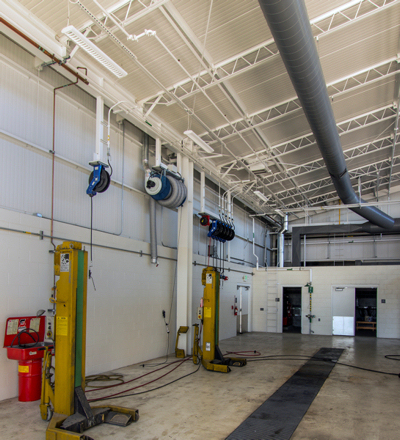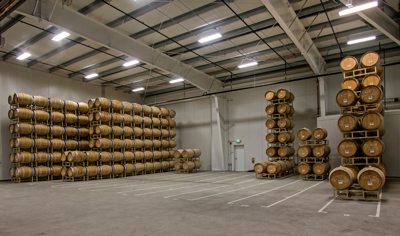 By Jim Brock, Kingspan Insulated Panels
By Jim Brock, Kingspan Insulated Panels
When it comes to insulating a facility, insulation addresses two important goals. The goals consist of maintaining a consistent interior temperature and preventing moisture from forming and collecting due to condensation.
There are several different materials and ways to insulate a roof including fiberglass, rigid board, and insulated metal panels. Costs and benefits may vary between the products, but an overall building envelope comparison shows some marked differences.
| |  |
| | Insulated metal roofing panels speed construction by providing the roof, insulation and interior finish in a single installation step. The photos above and below show the Mendocino Transit Authority Bus Maintenance Facility in California. Chosen for the project were KingZip™ insulated standing seam panels from Kingspan Insulated Panels. |
| |  |
Choices in Insulation
Fiberglass insulation has traditionally been the most common for use with metal building roofs. It can be installed as a single-layer system or a two-layer system.
In a single-layer system, blankets of insulation are rolled out on top of the steel structure with the vapor retarder facing down and towards the inside of the building creating a finished look. Seams where blankets meet are joined by folding and stapling the facing tabs or taping the joint to prevent water vapor from getting through the insulation and condensing on the roof.
After insulation blankets are in place, thermal spacer blocks made from strips of foam are placed above the purlins before attaching the roof panels. The foam strips add insulation value where the insulation is compressed between purlin and roof sheet.
The two-layer system is like the single-layer over-the-purlin system. The difference is the first layer of faced insulation is allowed to drape between each purlin and a second layer of insulation is installed parallel to and between each purlin. This system also has thermal spacer blocks on top of the purlins and is called the “filled cavity” system.
Both systems rely on the insulation materials being allowed to expand to their full thickness between the purlins to reach their greatest effectiveness. That usually does not occur and the actual thermal performance is less than what is normally published.
Rigid foam boards do not need to expand and will not compress between the roof and the purlins. The thermal performance is consistent and different R-values can be achieved with varied board thicknesses or extra layers.
 | |
KingZip panels are frequently used in conjunction with insulated metal wall systems for cold storage and wine storage buildings. The photos above and below show the panels being used to convert an old metal building into a new wine storage facility for a leading California winery. | |
 | |
Costs for rigid foam board insulation systems are higher than fiberglass systems but the installation method is similar to the single-layer system. Foam boards are placed perpendicular across the purlins and run from the eaves to the ridgeline. Additional layers are staggered to cut seams between boards from lining up.
Insulated roofing panels consist of an insulating foam core sandwiched between two metal panels. The roofing panel eliminates the need for fiberglass blanket or rigid board insulation. Although more expensive than the other insulation options, insulated roofing panels offer exceptional insulating properties, faster installation times, and a streamlined architectural appearance.
Overall Cost and Performance
In a direct, product-to-product cost comparison, insulated metal panels are the most expensive. Comparing the total cost of the roofing system is where insulated metal panels show their true savings.
A properly designed and installed roofing system features four critical components, a water barrier, air barrier, thermal barrier, and vapor barrier. Fiberglass and rigid foam board certainly cover the thermal aspect and can sometimes also offer a water or vapor barrier but that is about it. Other components and additional installation time are required to complete the roof. Insulated metal panels are the only system that offers a complete envelope in one single-source product. Installation is faster, buildings are closed-in quicker, and performance of the panels remains the same for the lifetime of the roof.
Factor in the ever-increasing thermal requirements and changes in building codes, and insulated metal roofing panels are definitely the way to go.